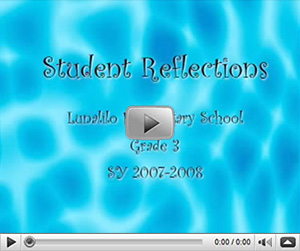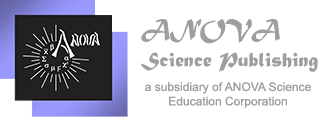 Chapter 1
Chapter 1
Supporting the Next Generation of Scientific Practices with More Emphasis on Learners and Their Thinking Chapter 5
Chapter 5
RIP®~ing Beyond Science with Slippers and M&M's (Critical Thinking in Social Studies and Mathematics) Chapter 6
Chapter 6
If Students RIP® into Termite Nature, Then They Will Build Science Understanding Because Inquiry Leads to Knowledge
Chapter 1: Supporting the Next Generation of Scientific Practices with More Emphasis on Learners and Their Thinking
Imagine your science, STEM and other content area classrooms applying a scientific practices critical thinking framework through which all learning is performed in the context of exciting and relevant investigation. This chapter provides a preview of how each teacher-author in this book invited their students to think deeply and creatively, two sorely needed attributes in students (Costa, 2008), that are key in driving both student and teacher toward a successful, rigorous inquiry experience that brings together the achievement of content standards. Within the framework of the National Science Education Standards and Next Generation Science Standards, this chapter focuses on the conditions (termed "More Emphasis conditions") unveiled throughout the book necessary for achieving success in teaching and learning that will continue to be central throughout the 21st century.
Chapter 2: Spilling of Old Knowledge onto New Ways of Learning
A "years-old" favorite environmental classroom activity was transformed by the author's 5-year old students into a 21st century STEM investigation.
"I must admit that I was a skeptic when first faced with the enormous task of creating a lesson for my high-performing kindergarten class using inquiry-based instruction…Okay, I could provide the environment and the questions, but I still didn’t think kindergartners could manage a scientific inquiry…I knew they would be able to understand observation, but developing a research question and constructing a hypothesis? I’d seen a room full of educators having difficulty constructing a hypothesis, and now kindergartners were being asked to do this? You will see how a bunch of 5-year-olds proved me wrong!"
Chapter 3: Caterpillar to Butterfly: Transforming Kindergartners into Scientific Inquirers
Guiding students to select a topic for an engaging investigation to cover standards-based content can be an overwhelming challenge and seldom achievable. Even more rarely do inquiry-based opportunities naturally arise from student interest.
"For years, my students barely found their way to my classroom on-time because they would stop at the large crown flower plant right outside the door to look at the hanging chrysalises, emerging butterflies, and caterpillars crawling on the branches and leaves. The curiosity of these kindergartners led to this classroom investigation as part of their unit on life cycles."
"Caterpillars and butterflies are commonly showcased in a terrarium as part of a traditional classroom experience. Like the caterpillar that is transformed into a butterfly, in my chapter the kindergartner is transformed from ordinary learner into scientist extraordinaire!"
Chapter 4: How Noisy Is Sound? Science Building on Science
What started as a classroom disturbance grew into an extended set of investigations into the concepts of noise and sound, and how they affected students in a real and personal way.
"It just happened that one morning when my students were quietly working on a writing assignment, they were disturbed by the loud sounds of tree trimmers outside our classroom. Many of the students became agitated and made comments about how it was affecting their concentration. I knew this was an opportunity to address the science of sound in a way that was initiated by the students’ own interest."
Chapter 5: RIP®~ing Beyond Science with Slippers and M&M’s (Critical Thinking in Social Studies and Mathematics)
Whether studying about how cultural values shape behavior or working on probability in mathematics, students realize the paramount importance of paying attention to the validity, reliability, and credibility of information obtained from 21st century sources.
"While working on learning about probability using M&M’s, my students recognized that data from the company’s website regarding the distribution of M&M’s colors was not consistent with the data they had obtained from actual candies. They challenged the validity of the company claims and found the answer to their research question, 'Is the information from the company website accurate?'"
Can a class of third graders use their findings to make an impact on the accuracy of information displayed on a monstrous candy company’s website?
Chapter 6: If Students RIP® into Termite Nature, Then They Will Build Science Understanding Because Inquiry Leads to Knowledge
A community pest launches a secondary class into multiple investigations with a focus on constructing the hypothesis, one of the most important and probably the most challenging elements of scientific inquiry that requires students to think deeply, logically, and creatively. They become expert contributing citizens, teaching peers, teachers and community organizations about the damaging effects of termites on property.
"Partnering with a resource-rich community organization and the transformation of the classroom into a laboratory led my students beyond scientific knowledge into an understanding of their own deeper value as citizens of their community as they tested their hypotheses."
Chapter 7: The Special Needs Student and Scientific Inquiry: A Successful Tale
For this class of special needs students and their teacher, scientific inquiry is no longer limited to science class but has become a successful tale throughout the curriculum.
"Change - such a simple concept, but one so difficult to execute. Why try a scientific inquiry process with special needs students? Isn’t that too ambitious a task? Why try this new method anyway? I don’t even teach science! How could my students benefit?"
"Bending the traditional application of scientific inquiry toward other content areas resulted in many 'WOW' moments teachers live for!"
Chapter 8: Magnifying Student Wonder Through Scientific Inquiry
An upper elementary class made up of 100% disadvantaged and 56% ELL students just showed no interest in learning. Both students and teacher had lost that sense of inquisitiveness that grows from interest and curiosity. Then something clicked!
"Learning to teach through scientific inquiry was like my first year of teaching all over again. The apprehension! The anxiety! The challenge! The excitement! What to do? How to start?"
"All my years of teaching and now I was changing my approach with this new model that rejuvenated me - the RIP® [Research Investigation Process]. Energized with new ideas, my creative ability to make learning fun for the students as well as myself returned."
"This is my story of how even with this challenging class, I got back the joy of teaching in a system that is filled with high-stakes assessments and demanding NCLB requirements. I will share my journey toward finding my purpose again through the lessons I taught and insights I learned using scientific inquiry as my primary method of teaching."
Chapter 9: S-c-i-e-n-c-e in Our Class Spells Fun!
When a class of third graders investigate how sleep impacts their ability to learn, they had no idea how relevant their study was to current cutting edge scientific research on learning and sleep. Click here to view.
"In my 4 years of teaching thus far, I have been exposed to various science curriculums that claimed to be research based, hands on, and full of fun laboratory activities for the students. To my surprise, this particular science model encompassed more than I had imagined."
What results when eight and nine year olds examine error bars to analyze data and make decisions about their hypothesis?
"By letting my student explain the meaning of the error bars to the class, the students were able to argue for their hypothesis based on the data they had collected."
"Their faces lit up with excitement as they realized that their RIP [Research Investigation Process] was successful and their hypothesis had been supported! For the first time, I saw my class really enjoy the combined learning of language arts skills, science processes, and math concepts all in one project."
Chapter 10: Should I Keep My Lucky Socks?
For a team of middle school teachers, letting go of the control in the classroom was the biggest challenge of engaging students in scientific practices.
"I was amazed! Never again will I doubt my student’s abilities to think at a higher level when given the opportunity."
"We had to trust that our students were going to learn. And learn they did! They learned how to work together to get the information they needed. They learned how to listen open-mindedly to others with different opinions. They learned how to ask each other deeper and more meaningful questions. They learned how to apply the scientific inquiry process with each other to the questions they asked. Lastly, our students learned the importance of achieving ethical and reliable results."
"We discovered that our students’ hard work and perseverance takes the place of lucky socks any day."
Chapter 11: Cigarette Smokers Conclude "Not in My Body!"
A rich and rigorous journey is shared by a high school teacher whose special needs students engaged in scientific practices to stretch their thinking. They realized their true potential to succeed in learning even when challenged with the most difficult content.
Though we cannot always assess the impact of the learning in the classroom that leads into the students’ real-life situations, this transfer of application is the ultimate goal and reward for students and teachers—the end achieved in these four scientific inquiries.
"Much to my pleasure, several of my high school students have even decided to make science a career choice. One young lady accepted into the STEM program at a local community college declared, 'The RIP science class made me want to work in the field of science.' There was an additional human reward resulting from the inquiry experience: two young ladies in the group quit smoking and a third student cut back on her cigarette consumption!"
Chapter 12: RIP®~ing Away Barriers to Science Education: Inquiry Through the Research Investigation Process
What is the impact on students and teachers when a scientific practices model of critical thinking and learning is introduced into two very disparate high schools in different geographic and demographic areas: one extremely advantaged and one extremely disadvantaged?
This chapter originally appeared in Exemplary Science in Grades 9-12 published in 2005 by the National Science Teachers Association (NSTA). This new expanded version includes the unabridged results section.
Chapter 13: Impact of Instruction Through Scientific Inquiry Using the RIP® Model
"'What It Means to Learn Science’ in the new Framework for K-12 Science Education specifies the four strands of proficiency defined in Taking Science to School (National Research Council, 2007; 2012, p. 254). They are ‘1) knowing, using, and interpreting scientific explanations of the natural world; 2) generating and evaluating scientific evidence and explanations; 3) understanding the nature and development of scientific knowledge; and 4) participating productively in scientific practices and discourse.'"
"The Framework states, ‘Engagement in the scientific and engineering practices and the undertaking of sustained investigations related to the core ideas and crosscutting concepts provide the strategies by which the four strands can be developed together in instruction. The expectation is that students generate and interpret evidence and develop explanations of the natural world through sustained investigations’ (National Research Council, 2012, p. 255)."
"It is my hope that the experiences that the authors in this book share provide valuable suggestions and solutions for teachers across the nation to begin to make the adjustments necessary for them to be able to utilize scientific inquiry as a general instructional tool for addressing the Next Generation Science Standards, STEM, and learning in all other content areas. Application of the national standard’s More Emphasis conditions and scientific inquiry that focuses on content that is interesting and relevant to the students sets the stage for rigorous curriculum and provides empowerment for all students to grow as full and open inquirers."
-
Read the Foreword Now!
"The release of 'Look at Us Now!' could not have been timelier," writes Yager. "How scientific practices are mastered is just as important as the mastery of the practices themselves and this is a time of urgency for how the Next Generation Science Standards (NGSS) will be approached at the classroom level."
Enter your name and e-mail address below for immediate access to read the complete Foreword, written by Dr. Robert E. Yager, in its entirety.
-
How to Use This Book
Making Scientific Practices Matter in the Classroom… and Beyond can be used in a variety of ways for different purposes. It serves as a “tool book” for teachers of Kindergarten through Grade 12; a "resource book" for curriculum and instruction support staff (coordinators and supervisors, content specialists, coaches and mentors, and program developers); and a "case study book" for college level teaching methods courses.














